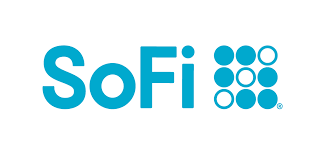Are You Overspending on Subscription Services?
You make a good salary, don't overspend on the necessities, and avoid shopping binges -- so why aren't you able to save more money?
It often takes people by surprise just how little they're saving, leading them to wonder where their money is going. If that sounds like you, then it's time to go over your monthly costs for all those subscription services, because that could be an area where you're spending more than you think.
The rise of subscription services
Subscription services are nothing new, but in recent years the number of companies offering subscription services and the revenue of those companies have exploded. Just how much growth are we talking about? McKinsey&Company found that subscription e-commerce retailers went from $57 million in sales in 2011 to $2.6 billion in 2016.
Previously, consumers would have their TV, phone, and internet service, and that was about it. Now, you have your streaming video services. Streaming music. Video gaming. Scheduled meal deliveries. Dating apps. Clothing boxes to try out different styles. And those are just the tip of the iceberg.
Even major established brands are branching out and offering subscription services of their own. Starbucks now offers subscription boxes with coffee or tea. Walmart is offering beauty boxes. Disney is planning its own streaming video service.
It makes sense for companies to do this because they get more value out of each customer. Instead of having customers make one purchase or purchase something every so often, they have customers paying a subscription fee month after month.
What consumers are really spending
Most subscription services don't cost much, so it's easy to underestimate how much you're spending when you've signed up for several. According to a survey by Waterstone, the average consumer drastically underestimates what they spend per month on subscription services.
In the survey, participants were asked to estimate their monthly spending on digital services, devices, and subscription boxes. They received two guesses, one with 10 seconds to think about the question and another with 30 seconds. Here were the results:
- After 10 seconds, the average estimate was $79.74.
- After 30 seconds, the average estimate was $111.61.
- The real average was $237.33.
How to cut back on your subscription spending
Subscription services often seem harmless due to their low monthly costs, but you also have to consider what they're costing you per-year and beyond. If you're right at the survey average and spending $237.33 per month on subscriptions, that's $2,847.96 per year.
Cutting that number in half could be perfect for pumping up your emergency fund, saving money in one of the best bank accounts for a family vacation, or contributing more towards your retirement.
Here's how to do a subscription purge and start saving more:
- List all your subscription spending -- Leave no stone unturned here. Check your bank statements and credit card bills until you have a list of all the services you use and the amount they cost you per month.
- Figure out which services are necessities -- Most everyone needs Wi-Fi and cell phone service, but other services, such as streaming videos and music, are obvious luxuries.
- Cut anything you don't use regularly -- If you only use a service once in a blue moon, you're better off getting rid of it. You can always sign up again later if you need it.
- Limit yourself to one service per category -- That means one video streaming service, one gaming service, and so on. Remember that you can always switch the services you use later. For example, instead of paying for Netflix, Hulu, Sling TV, and so on, you could stick with one, and then switch when you want to check out new content.
- Make sure you're not overspending -- Every three to six months, go over your list and see if there are cheaper options available that could work just as well. People often get used to paying the same amount every month and don't bother looking for alternatives that could save them money.
Hitting unsubscribe on overspending
Most of us have at least some subscription services that we're attached to, and there's nothing wrong with that. Just be careful that you don't overdo it. Those seemingly small monthly fees add up when you're subscribed to several different services. By making a few cuts here and there, you could save well over $1,000 every year.
Our Research Expert
We're firm believers in the Golden Rule, which is why editorial opinions are ours alone and have not been previously reviewed, approved, or endorsed by included advertisers. Motley Fool Money does not cover all offers on the market. Motley Fool Money is 100% owned and operated by The Motley Fool. Our knowledgeable team of personal finance editors and analysts are employed by The Motley Fool and held to the same set of publishing standards and editorial integrity while maintaining professional separation from the analysts and editors on other Motley Fool brands. Terms may apply to offers listed on this page. APYs are subject to change at any time without notice.



